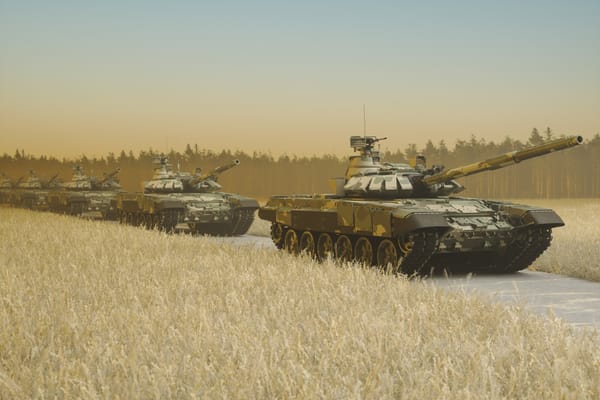🇸🇾 Damascus
#1 Most Fragile City

Damascus, the capital of Syria, is often cited as one of the most fragile cities in the world due to the profound and multifaceted challenges it has faced over the last decade and beyond. Situated in a country that has endured a protracted civil war since 2011, Damascus has been directly and indirectly affected by active conflict, mass displacement, severe economic downturns, and a patchwork of international sanctions. These overlapping factors have collectively strained the city’s infrastructure, threatened its population’s well-being, and dramatically altered its cultural landscape.
While parts of Damascus have regained a semblance of stability, many underlying issues remain unresolved. Essential services such as electricity, healthcare, and water provision still operate at reduced capacity. The cost of living has soared amid rampant inflation, while opportunities for stable employment remain scarce, pushing many households to the brink. Security checkpoints, travel restrictions, and a fragile sense of safety have further hindered daily life, making it difficult for businesses to thrive and for citizens to move freely in search of better opportunities.
Culturally, Damascus has long been celebrated for its status as one of the oldest continuously inhabited cities in the world. Its rich heritage includes ancient mosques, bustling souqs, and a tapestry of religious and ethnic communities. However, years of violence and political upheaval have taken a toll on this historical vibrance. Monuments that once drew tourists from around the globe are now overshadowed by the city’s ongoing humanitarian challenges. In many ways, the fragility of Damascus reflects not only the immediate aftermath of conflict but also broader, systemic vulnerabilities—economic instability, limited governance, and the erosion of societal trust.
Statistics
Population and Demographics
Prior to the Syrian civil war, Damascus was estimated to have around 1.7 to 2 million residents in the city proper, with the metropolitan area housing upwards of 2.5 million people. However, these figures have become increasingly difficult to verify since 2011, when massive internal displacement began. Many residents fled to other parts of Syria or abroad, while others relocated to Damascus from even more volatile regions like Aleppo or Homs. Consequently, official data is scarce, but various humanitarian agencies have estimated that the city’s population may have fluctuated significantly—some sources suggest it briefly grew due to inward migration from war-torn areas, then contracted as many fled abroad.
Economic Indicators
Damascus has seen its economy contract severely. Prior to the conflict, Syria’s GDP was growing steadily, and Damascus, as the capital, benefited from service-sector jobs, light industry, and tourism. After 2011, the country’s GDP plummeted by more than half, and inflation skyrocketed. Unemployment numbers remain high, with estimates ranging from 50% to 70% in some sectors nationwide. The cost of basic food items has ballooned, pushing a significant portion of the population into poverty. Electricity supply remains intermittent, often forcing neighborhoods to rely on generators or scheduled power rotations.
Humanitarian and Social Metrics
The fragility of Damascus becomes most evident when looking at social indicators. Access to clean water has been inconsistent, with daily availability sometimes limited to a few hours. Health services, while somewhat more stable in Damascus than in other war-affected regions, still suffer from shortages of staff, medicine, and equipment. According to the World Health Organization, nearly half of the country’s health facilities have been damaged or destroyed during the conflict, directly impacting Damascus’s capacity to provide advanced care. In addition, widespread displacement has resulted in overcrowded housing, with multiple families sometimes sharing a single residence. These compounding stresses fuel ongoing humanitarian concerns, illustrating why the city ranks high on lists of urban fragility.
History
Ancient Beginnings
Damascus is considered one of the oldest continuously inhabited cities on Earth, with evidence of settlement dating back more than 3,000 years. For centuries, it served as a cultural and trading hub in the Levant, benefiting from its proximity to caravan routes that connected Mesopotamia to Egypt and the Mediterranean. The city’s ancient walls, gates, and the famed Umayyad Mosque bear testament to a history layered with civilizations ranging from the Arameans and Romans to Byzantines and Arabs.
Medieval and Ottoman Eras
Throughout the medieval period, Damascus blossomed into an influential center of trade, scholarship, and craftsmanship. Renowned for its textiles, particularly damask and silk, the city attracted merchants from across the region. The Ottoman Empire absorbed Damascus in the 16th century, and under Ottoman rule, the city served as a crucial station for pilgrims traveling to Mecca. This era left an indelible architectural imprint, with caravansaries and madrasas that still stand today, though many have suffered neglect and damage over recent decades.
Modern State Formation
Following the end of Ottoman rule and a period under French mandate, Syria gained independence in the mid-20th century. Damascus emerged as the political and administrative heart of the new republic. Urban growth accelerated, with new districts, government buildings, and universities established. However, authoritarian governance structures and regional conflicts (including wars with Israel, tensions in neighboring Lebanon, and the rise of internal opposition movements) steadily shaped the city’s political and social environment.
Civil War and Ongoing Crisis
The civil war that broke out in 2011 profoundly altered Damascus. While the capital did not witness the same level of devastation as cities like Aleppo or Raqqa, it was far from immune. Various suburbs—particularly in Eastern Ghouta—became flashpoints for intense clashes. Civilians in these areas faced shelling, food shortages, and the collapse of essential services. Though government forces eventually reasserted control over most of the Damascus region, the city’s economic, social, and cultural fabric was irreversibly changed. The war disrupted tourism, forced the closure of countless businesses, and eroded trust across societal lines. Even as relative calm returned to the city center, infrastructure failures, shortages of fuel and electricity, and lingering economic sanctions continue to hamper recovery.
Outlook
Looking ahead over the next 10 to 20 years, Damascus faces several possible trajectories. On one hand, should relative stability hold, there is potential for gradual rebuilding. Some reconstruction projects are already underway in select neighborhoods, and international donors, NGOs, and private investors may become more willing to assist if a broader political settlement is reached. The city’s storied cultural heritage could again draw tourists if security conditions improve. Renewed engagement with regional trade partners might also provide a modest boost to local businesses and employment.
Yet significant uncertainties loom. Syria remains subject to multiple economic sanctions, hampering trade and foreign investment. The government’s relationship with Western nations is strained, with little sign of a swift diplomatic breakthrough. Political reconciliation is likewise fragile, as large segments of the Syrian diaspora remain in exile, and domestic power structures have seen minimal reforms. Should tensions flare again—either through renewed conflict or economic deterioration—any rebuilding momentum in Damascus could stall. Furthermore, the city must address social rifts exacerbated by years of war. Displaced residents who return may find homes destroyed or occupied, intensifying disputes over property rights. Youth unemployment, insufficient healthcare, and a lack of inclusive governance could continue driving social instability.
A gradual improvement in living conditions is not entirely off the table, especially if peace negotiations gain traction. A more open political climate could encourage diaspora communities—and their remittances—to return, bringing both capital and entrepreneurial expertise. Public-private partnerships might emerge to rebuild water systems, hospitals, and roads, creating jobs and a sense of hope for long-suffering residents. However, these optimistic scenarios hinge on broader geopolitical developments, such as easing tensions between Syria and its neighbors and the potential relaxation of sanctions.
In all likelihood, Damascus’s path forward will be a mix of incremental recovery in some areas and persistent struggle in others. The city’s resilience, drawn from centuries of cultural adaptation, offers reason to believe it can endure further hardships. Nonetheless, the legacies of war—damaged infrastructure, fractured communities, and ongoing economic stagnation—pose significant hurdles. Whether Damascus can navigate these challenges or slide further into fragility will depend on a complex interplay of local governance, international diplomacy, economic policy, and the collective will of its people to seek reconciliation and rebuild.





